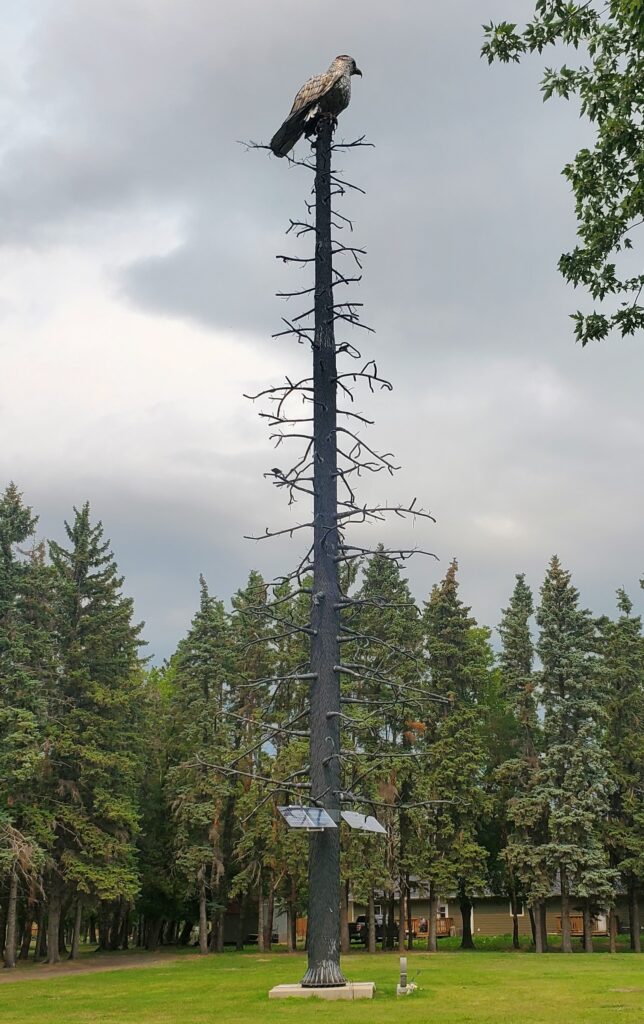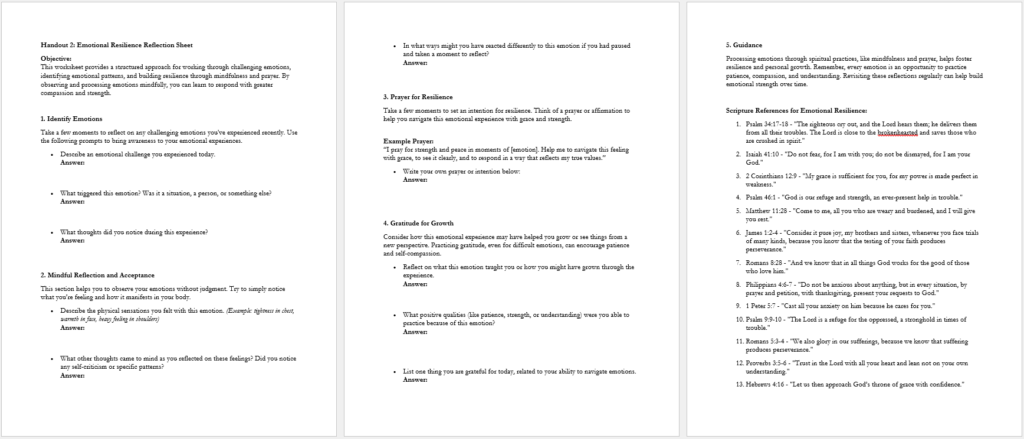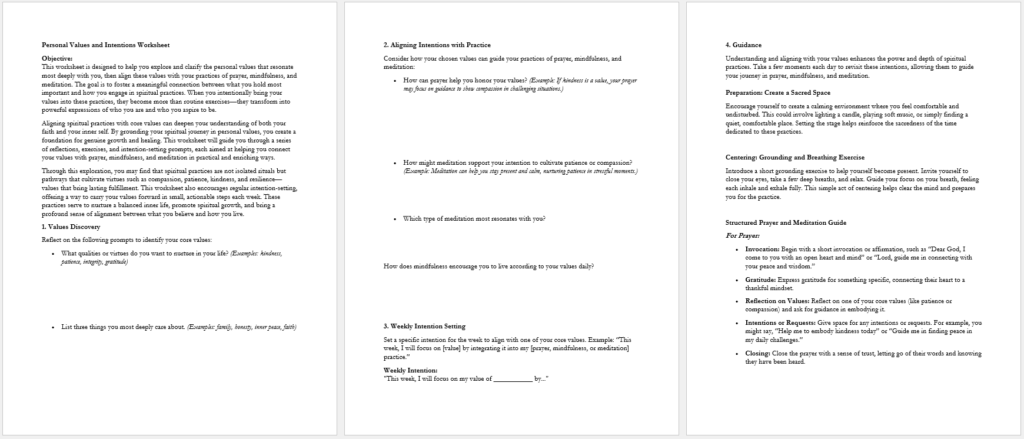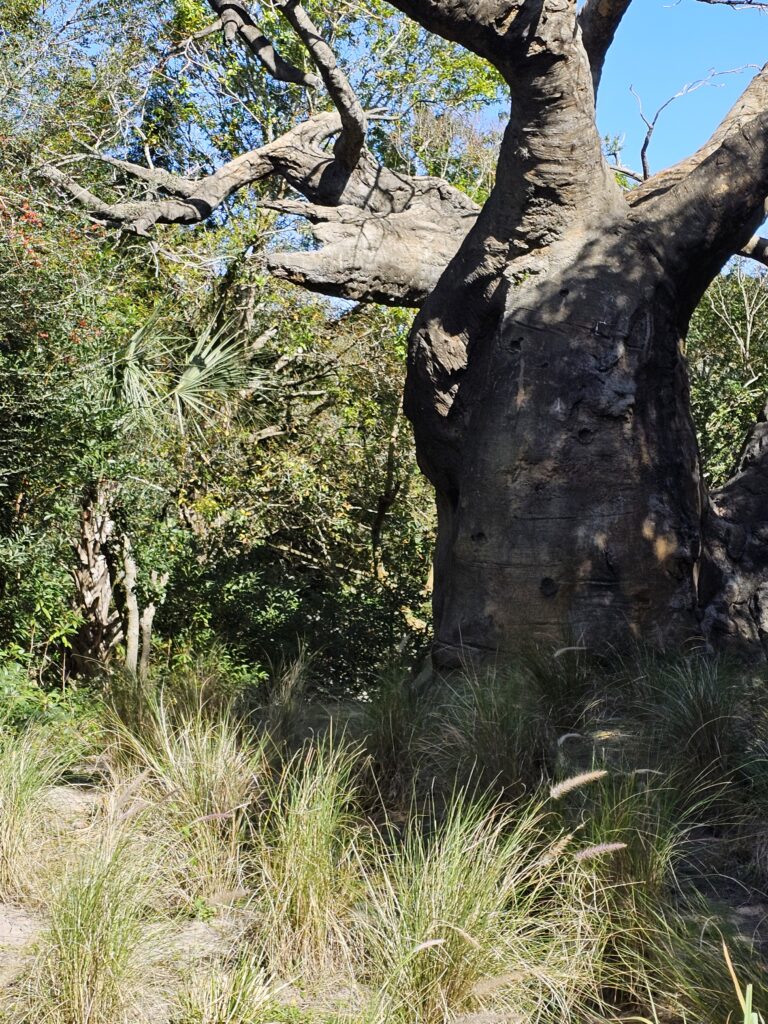
Mindfulness Prayer
Making space within, a breath unbound,
In quiet moments, peace is found.
Nurturing whispers, soft and clear,
Drawing close, the Spirit near.
For every thought and every care,
Under grace, laid bare in prayer.
Lifting hearts in still embrace,
Nestled deep in sacred space.
Endless calm, like morning’s light,
Strength renewed, in silent might.
Seeking truth, a gentle guide,
Pillars of faith, where fears reside.
Resilience built from trust so deep,
A soul that rests, yet strength to keep.
Yearning now for peace anew,
Each breath a gift, a path pursued,
Reaching high, both calm and true.
Dr. Tranquil
Introduction to Mindfulness, Prayer, and Meditation
In our complex and ever-demanding lives, the need for moments of peace, reflection, and inner grounding has become a spiritual necessity. Mindfulness, prayer, and meditation each offer distinct paths to this sacred calm. Though their purposes vary, they all draw us closer to an internal stillness and, ultimately, to a life of intentional, spiritually-aligned living. Each of these practices carries its own approach and tradition, but together, they serve as pillars of resilience, self-awareness, and connection to the divine.
Mindfulness is the art of being fully present in each moment, a conscious decision to engage with our surroundings, thoughts, and feelings without judgment or distraction. It invites us to quiet the rushing mind and to notice the subtleties of our lives—the rhythm of our breath, the weight of our steps, the sound of our environment. Mindfulness becomes a foundation for deeper self-understanding, allowing us to be aware of the inner dialogue that often goes unnoticed and unexamined. Through this practice, we learn to observe our thoughts without attachment, to see each moment as it is, and to gain clarity on how we want to respond to life’s challenges. Over time, mindfulness can cultivate a profound calm, helping us to see our lives and values with a greater depth, and teaching us that true peace lies within each breath and moment, not in waiting for circumstances to align.
Prayer, deeply intertwined with mindfulness yet carrying a distinct purpose, is a sacred practice of connection, surrender, and trust. In prayer, we reach beyond ourselves, opening our hearts and minds to divine presence. It becomes a conversation with God, a time to express gratitude, to seek guidance, and to share our most vulnerable hopes, fears, and burdens. Unlike mindfulness, which keeps our attention in the present moment, prayer lifts our focus outward and upward, inviting us into communion with the divine and encouraging us to entrust our worries and joys to a higher power. Through prayer, we learn to rely not solely on our own understanding or strength, but on the wisdom and grace of something greater than ourselves. It is a practice of humility and openness, helping us to align our hearts with God’s love and purposes, and to find solace in knowing we are supported and understood.
Meditation, a practice often paired with both mindfulness and prayer, brings an emphasis on inner stillness and focused attention. Meditation invites us to enter a space of quiet reflection, to turn away from the noise of the world and to listen deeply within. While mindfulness encourages us to actively engage with the present, meditation allows us to rest deeply, to find a place of calm awareness that exists within us regardless of external circumstances. This stillness cultivates clarity and insight, allowing us to process emotions and thoughts in a calm, undisturbed space. In meditation, we practice detachment from life’s daily stresses, letting go of the inner narratives that sometimes drive anxiety or distraction. It becomes a space for restoration, helping us to nurture a quiet resilience that we can carry into our everyday lives. In moments of meditation, we find that our thoughts and worries can settle, creating space for a deeper peace and understanding.
Together, these practices—mindfulness, prayer, and meditation—create a deeply nourishing spiritual triad. Each practice brings its own strengths: mindfulness keeps us aware and connected to the present; prayer draws us closer to divine wisdom, surrender, and guidance; and meditation cultivates a quiet resilience and inner calm. By weaving these practices into our daily lives, we build a foundation for personal growth, mental clarity, and spiritual alignment. We become more equipped to face life’s complexities with a grounded heart and mind.
Mindfulness, prayer, and meditation strengthen our understanding of ourselves and open us to deeper, more compassionate ways of relating to others and to our own inner lives. They empower us to navigate each day with clarity, to act from a place of intentionality, and to connect with the profound peace that exists within us, in harmony with God’s purpose. Together, they remind us that peace, resilience, and fulfillment are not found outside ourselves but are cultivated in the quiet, sacred spaces within. Through these practices, we learn to live each day with an openness to divine presence, a calm center, and a renewed capacity to meet life’s joys and challenges with grace.

Shelter of Prayer
Beneath the canvas sky of thought,
where breaths unfold in woven threads,
A teepee stands, its poles aligned,
grounded firm where spirit treads.
Each pole a word, each breath a guide,
in silent circles whispers glide—
Soft light filters through stitched seams,
holding space for inner dreams.
A shelter spun of peace and prayer,
built not by hands but quiet care,
Where mind and spirit rise as one,
and breath becomes the morning sun.
Dr. Tranquil
The Purpose and Power of Each Practice
Mindfulness, prayer, and meditation each offer unique ways to connect with ourselves and the world around us, yet they work together like the branches, roots, and trunk of a mighty tree. Each practice holds a distinct purpose but contributes to a unified strength and resilience that enriches our lives.
Mindfulness: The Branches Reaching Outward
Mindfulness is like the branches of a tree reaching out to touch the world. In practicing mindfulness, we stretch our awareness to each moment, noticing everything around us—the warmth of sunlight, the sound of wind, the details of each leaf. It is the practice of presence, of stepping outside of our minds and grounding ourselves in the here and now. Mindfulness teaches us to pause, to see our lives without judgment, and to approach each experience with curiosity and openness.
Just as branches extend and grow in response to the world around them, mindfulness helps us respond to our lives with intention and awareness. Through mindfulness, we gain clarity, learning to observe our thoughts and emotions as they come and go without letting them control us. This practice keeps us anchored in the present moment, helping us to focus on what is real and meaningful, not what is imaginary or distracting. By bringing attention to our thoughts, actions, and surroundings, we become more in tune with our values, allowing them to shape our decisions and behaviors with authenticity.
Prayer: The Roots Reaching Deep for Nourishment
Prayer is like the roots of the tree, stretching deep into the earth, seeking nourishment from the unseen. Through prayer, we draw strength from a divine connection, grounding ourselves in faith, hope, and purpose. While mindfulness invites us to observe, prayer is an active reaching out—a conversation with the sacred, an expression of our innermost thoughts, desires, and gratitude. In prayer, we come before God, not only to ask for guidance but to release our burdens and open our hearts to divine wisdom.
Just as roots hold a tree steady in storms and provide life-giving nutrients, prayer sustains us in times of difficulty, doubt, and need. Prayer reminds us that we do not walk through life alone; it invites us to surrender our worries and to trust in something greater than ourselves. Through prayer, we anchor ourselves in a love and strength beyond our understanding, finding peace in the knowledge that we are supported, known, and cherished. Prayer keeps us connected to our source, helping us stand firm even when life’s challenges try to uproot us.
Meditation: The Trunk That Holds Everything Together
Meditation is like the trunk of the tree, solid and centered, providing structure and stability. In meditation, we find a place of quiet stillness within ourselves, a center that is unshaken by the winds of daily life. Meditation asks us to sit with our own thoughts, not to change or judge them, but to allow them to settle and become clear. This practice of focused stillness helps us to detach from the anxieties and stresses that can often cloud our minds.
Just as the trunk of a tree supports the branches and roots, meditation supports mindfulness and prayer by creating space for peace and resilience. When we meditate, we cultivate an inner calm that stays with us throughout the day, helping us to respond rather than react to situations. Meditation strengthens our ability to pause, to reflect, and to make choices from a place of clarity. It brings us back to ourselves, helping us to see life with a balanced perspective and to approach challenges with a sense of calm assurance.
Together: A Unified Growth Toward Heaven
Each of these practices—mindfulness, prayer, and meditation—contributes to our growth, helping us reach outward, stay rooted, and hold steady. Mindfulness brings our awareness to each moment, allowing us to live with purpose. Prayer draws us close to the divine, nourishing us with faith and strength. Meditation centers us, providing a solid foundation for resilience and clarity. Together, they form a complete and unified practice, helping us to grow with intention and to live in harmony with our values.
Just as a tree reaches toward the sky, these practices guide us to grow toward the fullness of life, toward a deeper understanding of ourselves and our connection to God. By embracing each practice, we cultivate a life that is rooted in peace, sustained by faith, and guided by an inner strength that withstands the storms of life. Through mindfulness, prayer, and meditation, we learn to thrive, to connect, and to rise resilient, day by day, reaching ever closer to the divine purpose we were created to fulfill.

Cathedrals of Breath and Stone
In the dusk-dawn silence, a murmur, a hum—
Whispered pulse of prayer in rhythm’s thumb,
a hallowed sway, a breathed remain,
soft cymbals of mind’s quiet refrain.
From deep earth’s cradle, in shadows spun,
where roots dream in loam, slow rivers run—
Meditation sits as stone, dense and deep,
patient where the hidden spirits sleep.
Sifted sands of stillness cling to air,
as prayer and breath in tandem bear
the seed to crest, to peak’s ascent,
in coils of silence and voices spent.
A huddle of hills, then spires appear,
built in breaths, in bowed breaths clear—
Layer upon layer, a mountain’s bloom,
where thoughts dissolve, unbridled room.
Meditation anchors, heavy, vast;
Mindfulness gathers, catches, fast;
and prayer uplifts, in arcs, in cries,
’til the mountain breaks to touch the skies.
Dr. Tranquil
Mindfulness in Everyday Life
In the small moments, in the seemingly insignificant spaces of our day, lies the potential for profound change. Mindfulness teaches us to engage fully with life, to tune into each breath, each sensation, each thought, and to cultivate a state of heightened presence. It’s in these small acts of presence that we develop an inner fortitude, a quiet but potent tenacity that we carry through life’s greatest challenges. For those who embrace it, mindfulness becomes a cornerstone, not only for calm but for something far greater—a lasting, intricate endurance that sustains through every trial.
Imagine, for a moment, a woman named Elena. She had once been a person whose life was structured by constant demands, a series of relentless deadlines, and a sea of tasks that seemed endless. She was respected in her work but often felt that life was passing her by, that she was living on the surface, never truly touching the depths of her own existence. Over the years, her responsibilities grew, and with them came a heavy pressure that at times felt unbearable.
Then came a turning point. Elena faced an unexpected upheaval: the sudden loss of a loved one, followed closely by a health diagnosis that required her immediate attention and care. The two blows left her feeling unmoored, struggling to find solid ground amid a storm of grief and uncertainty. She had once leaned on her productivity to feel secure, to define her sense of worth and accomplishment. But now, the ground beneath her seemed to dissolve, and her former coping mechanisms failed her.
It was then, in her search for stability, that she discovered mindfulness. A friend recommended it as a way to regain a sense of equilibrium, and though skeptical, Elena began to explore the practice. Initially, she struggled to stay present, her thoughts darting anxiously from past regrets to future fears. But little by little, as she persisted, something within her began to shift.
Each day, she set aside just five minutes to sit in silence, to breathe deeply, and to observe her thoughts without attachment. She would close her eyes, notice the tension in her body, the tightness in her chest, and then slowly release each breath, letting go of the weight she had carried for so long. Over time, her practice grew, and with it grew a newfound mettle—an unwavering endurance that she had never known before.
With this intricate resilience, Elena found herself able to face her grief without being consumed by it. She no longer felt the need to suppress her emotions or push through them; instead, she allowed them space, honoring each feeling as it came and went. Mindfulness became a sanctuary, a space where she could find peace amid the chaos, a reminder that within her was a strength unbound by circumstance.
Through the practice of mindfulness, Elena discovered a tenacity that did not require her to fight or resist but to simply be. She could sit with her pain, her fears, and her uncertainties, knowing that they did not define her. In mindfulness, she found the courage to move forward, not by escaping her reality but by embracing it fully.
Each moment spent in mindful presence strengthened her, building an intricate resilience that held her steady. Her experience became less about survival and more about living each day with intention, aware of both her limitations and her strength. Mindfulness gave her the power to endure, to accept what was beyond her control, and to grow through the very challenges she once thought would break her.
Elena’s story reminds us that mindfulness isn’t simply a tool for relaxation; it’s a profound practice that cultivates an enduring resilience, allowing us to face life’s storms with quiet strength. In those moments of stillness, we learn to listen to ourselves, to honor our feelings, and to find a steady foundation within. Through mindfulness, we develop the courage to live fully, knowing that true resilience comes not from fighting our struggles but from embracing them with open hands and a peaceful heart.
Identification and Processing of Emotions Through Prayer


Nothing is Beyond Control
Within cathedral shadows cast,
she finds her breath, the quiet vast—
A prayer in stone, a whispered light,
that guides her heart from grief to sight.
Each echo soft, a steady hymn,
resilience built in silent rim—
Among the arches, calm and whole,
a strength reborn within her soul.
Dr. Tranquil
Practical Prayer Techniques and Reflections
Prayer has the power to deepen our connection to the divine and ground us in an unshakable inner peace. Beyond simply a request or an expression of gratitude, prayer becomes a dialogue, a sacred conversation that helps us feel known and supported. It’s a powerful act of release—letting go of our burdens, fears, and uncertainties and placing them into the hands of a presence greater than ourselves. While many may see prayer as a ritual or a task, it can become a transformative practice, an opportunity to realign our hearts with our values and draw closer to our spiritual purpose.
The Prayer of Surrender
One of the most profound forms of prayer is the prayer of surrender. This practice is centered on the release of control and the acceptance of life’s uncertainties. Often, we carry with us the need to fix, solve, or manage every situation in our lives. The prayer of surrender allows us to let go of this need, to release our grip on the circumstances we cannot change, and to trust in the wisdom of God’s timing and purpose.
Imagine praying in the quiet of the evening, simply saying, “Lord, I place my worries in Your hands. Guide me, strengthen me, and help me trust.” By practicing this form of surrender, we feel a lightness within—a weight lifted, a peace that comes from knowing we do not bear the burdens alone. The act of surrender in prayer teaches us humility, patience, and resilience, as we learn to rest in the knowledge that we are held by something far greater than ourselves.
Gratitude Prayer: Recognizing Blessings
Another powerful form of prayer is the gratitude prayer, a practice of acknowledging and celebrating the blessings in our lives, no matter how small. When we actively recognize and give thanks, our focus shifts from what we lack to what we have. This simple act of gratitude brings a deep joy and peace, reminding us of the abundance already present in our lives.
Each morning, take a moment to reflect on three things for which you’re grateful. Speak these blessings aloud, offering thanks: “Thank you, Lord, for the warmth of the sun, the kindness I received today, and the strength to meet my challenges.” Over time, gratitude prayer becomes a foundation for contentment and positivity, allowing us to live with a heart full of appreciation rather than longing. Gratitude strengthens our faith and builds a perspective rooted in abundance rather than scarcity.
ACTS Prayer Method: A Structured Approach
For those who seek structure, the ACTS prayer method can offer a balanced way to approach prayer. ACTS stands for Adoration, Confession, Thanksgiving, and Supplication, and it provides a simple yet effective framework for a meaningful prayer practice.
- Adoration: Begin by acknowledging the greatness and goodness of God. Take time to honor His presence in your life, to recognize the beauty and love that surrounds you.
- Confession: Openly admit your faults, releasing any guilt or regret you may carry. Allow prayer to be a space for honesty and humility, a place where you bring forth your struggles and ask for forgiveness.
- Thanksgiving: Express gratitude for the blessings, big and small, that you experience. Acknowledge the good in your life and allow it to fill your heart with appreciation.
- Supplication: Finally, make your requests known. Ask for guidance, strength, healing, or wisdom, lifting up your needs with trust and humility.
Through this structured approach, the ACTS method encourages a balanced prayer that not only brings us closer to God but also helps us reflect on our values, acknowledge our humanity, and recognize the many blessings present in our lives. Each component of ACTS deepens our relationship with God, making prayer a holistic practice that nurtures our spirit.
Meditative Prayer: Finding Stillness in God’s Presence
Meditative prayer combines the quiet focus of meditation with the spiritual connection of prayer. It involves sitting in silence, allowing ourselves to be fully present with God without words or requests. This form of prayer is about resting in divine presence, a time to simply listen, to feel, and to connect without any agenda.
Begin by finding a quiet space and taking a few deep breaths. Set an intention to be still, to feel God’s presence, and to let go of any need for action or answers. In meditative prayer, simply repeat a phrase, such as “Be still and know that I am God,” or even a single word, like “peace” or “love.” Allow this time to be a sanctuary, a space of calm that centers you and opens your heart.
Over time, meditative prayer nurtures patience, humility, and trust, allowing you to experience a profound peace that surpasses understanding. In these moments, we realize that we are never alone, that we are always connected to a source of love, guidance, and strength.
Each of these prayer techniques offers a unique path toward deepening our spiritual lives, grounding us in peace and resilience. By incorporating prayer as a regular practice, we open ourselves to guidance, find comfort in times of challenge, and nurture a faith that carries us through every moment.
Prayers Guide Worksheet


Rooted in Vastness
Under sun’s fierce gaze,
ancient limbs stretch wide and strong—
earth-bound, reaching sky.
Dr. Tranquil
Meditation Methods and Practices for Beginners and Beyond
Meditation is a practice of finding inner stillness, a way to tune into the quiet voice within that often gets drowned out by the noise of daily life. While mindfulness keeps us present in each moment, meditation invites us to go even deeper, creating a space of calm and awareness that rejuvenates our minds, strengthens our spirits, and allows us to connect with our true selves. Meditation is more than just a method of relaxation; it is a journey inward, a sanctuary where we can listen without distraction, process emotions, and cultivate a resilient inner peace.
Breath-Focused Meditation: Cultivating Calm with Each Breath
One of the most accessible forms of meditation is breath-focused meditation, a practice centered on the simple yet profound act of breathing. Just as an anchor holds a ship steady, our breath grounds us, creating a rhythm that we can return to whenever we feel overwhelmed or unbalanced. This meditation invites us to pay close attention to each inhale and exhale, noticing how the breath flows naturally and brings life to the body.
Begin by sitting comfortably, closing your eyes, and taking a few deep breaths. Focus on the sensation of the breath entering and leaving your body. Feel the air fill your lungs, then gently release it. Whenever your mind wanders, simply bring your attention back to your breath, grounding yourself in its steady rhythm. Breath-focused meditation creates a sense of tranquility, helping us let go of anxieties and distractions, and allowing the breath to carry away what no longer serves us.
Body Scan Meditation: Embracing Awareness and Release
The body scan is a powerful meditation practice for releasing tension and becoming more aware of our physical and emotional states. It invites us to move our attention through each part of the body, noticing sensations without judgment, and allowing any tension to soften and release. This practice not only relaxes the body but also helps us connect to the subtle signals and emotions that we often ignore.
To begin, lie down or sit comfortably, close your eyes, and take a few deep breaths. Start by focusing on your toes, noticing any sensations, tightness, or relaxation. Slowly move your attention up through each part of your body—your feet, legs, torso, arms, neck, and head. As you focus on each area, take a moment to release any tension or stress you may be holding. Body scan meditation nurtures a deep awareness of our physical and emotional selves, fostering a gentle acceptance of what is present and helping us let go of stored tension.
Guided Visualization: Painting Peaceful Landscapes Within
Guided visualization combines the power of imagination with meditation, inviting us to create mental images that promote calm, focus, and healing. Visualization offers a sanctuary within, allowing us to mentally “visit” places that bring us peace and joy. This practice is especially helpful for those who struggle to quiet their minds, as it provides a structured focus and a sense of journey.
Begin by choosing a peaceful image—perhaps a serene beach, a mountain landscape, or a forest. Close your eyes, breathe deeply, and imagine yourself in this place. Visualize every detail—the sound of the waves, the feel of the sun on your skin, the scent of pine trees. Allow yourself to feel completely immersed in this environment, letting its calmness settle into your mind and heart. Guided visualization becomes a retreat that we can visit anytime, helping us reconnect with peace and draw strength from within.
Loving-Kindness Meditation: Extending Compassion to Yourself and Others
Loving-kindness meditation, or “metta” meditation, is a practice of sending compassion and warmth to oneself and others. By focusing on kindness, we cultivate empathy and understanding, not only for ourselves but for the world around us. This meditation allows us to let go of resentment, foster forgiveness, and build a heart that is open to love and acceptance.
To begin, sit quietly and close your eyes. Start by sending love and kindness to yourself, silently repeating phrases like, “May I be safe. May I be happy. May I be healthy. May I live with ease.” After a few moments, extend these phrases to someone you care about, then to a neutral person, and finally to someone with whom you have difficulties. Loving-kindness meditation helps us break down barriers of anger or judgment, filling our hearts with compassion and fostering a connection that goes beyond our immediate circle.
Centering Meditation: Anchoring in Silence and Stillness
Centering meditation is a contemplative practice that encourages us to dwell in silence, to quiet the mind, and to allow thoughts and distractions to pass without attachment. In this form of meditation, we let go of any specific focus—like the breath or visualization—and instead immerse ourselves in a state of stillness. Centering meditation is especially helpful for developing resilience and clarity, teaching us to remain calm amid life’s turbulence.
To begin, find a quiet space, sit comfortably, and close your eyes. Choose a simple word or phrase, such as “peace” or “grace,” and silently repeat it whenever thoughts arise. Allow yourself to be fully present in the silence, letting the repetition of the word or phrase anchor you. As distractions come, acknowledge them without judgment and gently return to your focus. Centering meditation cultivates a serene openness within, helping us to embrace each moment with patience and calm.
Each meditation practice offers a unique pathway to inner peace, resilience, and spiritual connection. By exploring different methods, we can find the practices that resonate most with us, creating a meditation routine that supports our mental, emotional, and spiritual growth. Meditation, in all its forms, becomes a place where we can return to again and again—a sanctuary of calm, strength, and clarity. Through meditation, we connect with ourselves and the divine, finding a deeper sense of purpose and presence in every day.
Aphantasia – The inability to see in your minds eye
For many, meditation techniques like guided visualization offer a powerful way to connect with peace and create inner landscapes of calm. However, some individuals experience a phenomenon known as aphantasia, which is the inability to visualize images in the mind’s eye. For those who cannot picture scenes or objects mentally, meditation can still be deeply effective and meaningful, as there are many ways to engage in meditation without relying on visualization.
One way to meditate without visualization is to focus on physical sensations rather than images. Practices like body scan meditation can guide you to move your awareness through each part of the body, observing sensations, tension, or relaxation without needing to picture it in your mind. This practice fosters a sense of groundedness and presence by allowing you to feel rather than see, anchoring your awareness in the body’s experience. Alternatively, focusing on the rhythm and depth of your breath is another accessible way to meditate, cultivating calm by centering on each inhale and exhale.
Mantra or sound-based meditation is another excellent option for those who cannot visualize. In this practice, you choose a word, phrase, or sound—such as “peace,” “love,” or a gentle humming sound—to repeat mentally or aloud. By concentrating on the sound or repetition, your mind naturally finds a rhythm that brings calm and focus. This practice helps you enter a meditative state by focusing on auditory and verbal sensations, providing a steady anchor that quiets the mind and cultivates peace. With a wide variety of non-visual techniques, meditation can be accessible to everyone, opening paths to inner tranquility and resilience regardless of one’s ability to visualize.
Breath Work in Daily Life
Integrating breath work into everyday life is a powerful way to create moments of calm, focus, and resilience no matter where you are. The beauty of breath work lies in its accessibility; it requires no special equipment and can be practiced in a few seconds or a few minutes, as needed. By weaving breath work into the flow of daily life, you create anchors of peace that help ground you in moments of stress, keep you focused during challenges, and offer a pathway to calm whenever needed.
In high-stress situations, such as before a meeting or a difficult conversation, taking just a few moments to practice deep, intentional breathing can reset your mindset and prepare you to engage with clarity and confidence. A technique as simple as box breathing—inhaling for four counts, holding for four, exhaling for four, and holding again for four—can create a sense of calm that shifts you out of a reactive state and into one of responsiveness. This brief but intentional focus on your breath allows you to move through situations with a greater sense of control, helping you to face challenges without being overwhelmed.
Breath work can also be used to enhance focus and energy throughout the day. Many find that starting the morning with a breathing exercise, like diaphragmatic breathing, sets a tone of calm and presence for the hours ahead. Similarly, taking short, mindful breathing breaks during transitions—whether shifting between tasks or taking a moment to step outside—provides a refreshing pause that re-centers your focus. By infusing moments of intentional breath work into your day, you cultivate a habit of mindfulness that nurtures resilience, focus, and inner peace, enriching your daily experience with moments of intentional calm.
Please see my page on Breath Work for further information

Whispers of Stillness
In quiet depths where softest murmurs dwell,
a place of calm beneath the restless mind,
there lies a sacred well where thoughts dispel,
where breath and spirit, intertwined, unwind.
Through prayer, a voice ascends on silent wings,
released like whispers to the vast unknown;
each word a spark, each plea a tethered string,
to grace unseen, a touch we’re seldom shown.
Yet mindfulness draws us to moments here,
to simple sights and sounds that shape our day,
while meditation finds the path so clear,
and clears the stones that lie along the way.
Together, bound like rivers meeting sea,
they form a stillness, whole and wild, and free.
Dr. Tranquil
Daily Practice Suggestions for Mindfulness, Prayer, and Meditation
Incorporating mindfulness, prayer, and meditation into a daily or weekly routine is a simple yet powerful way to cultivate inner peace, spiritual connection, and emotional resilience. Just a few dedicated moments each day can anchor you in calm and clarity, providing a foundation that supports your well-being in all areas of life. Here are some practical ways to bring these practices into your routine with consistency, patience, and intention.
Morning Mindfulness Meditation
Begin each morning with a short mindfulness meditation to set a calm, focused tone for the day ahead. Spend five to ten minutes sitting quietly, focusing on your breath and bringing awareness to the present moment. This morning ritual can be as simple as noticing the rhythm of each inhale and exhale, allowing any thoughts that arise to pass by without attachment. Morning mindfulness helps you greet the day with presence and intention, creating a foundation of calm that you can carry with you as you move through daily tasks and challenges.
Midday Breath Work for Centering
Throughout the day, take brief pauses for mindful breathing to re-center yourself. Use techniques like box breathing (inhaling for four counts, holding for four, exhaling for four, and holding again for four) to refresh your focus and energy. These short moments of breath work can be especially beneficial during transitions—between meetings, after a challenging task, or before stepping into a new environment. Pausing to breathe throughout the day helps maintain clarity and calm, grounding you in a steady mindset even amid a busy schedule.
Evening Prayer of Reflection
End each day with a time of prayerful reflection, a moment to look back on your experiences with gratitude and seek guidance for the future. This evening prayer can include a simple gratitude practice, acknowledging the blessings of the day, or a prayer of surrender, releasing any stress or worry into God’s care. This moment of quiet connection before bed encourages restful sleep and a peaceful heart, creating a rhythm of trust and gratitude that enriches your spiritual life.
Weekly Extended Meditation Session
Set aside time each week for a longer meditation session to deepen your practice and reconnect with your inner self. This could be a 20-30 minute guided meditation, a body scan, or a period of silent reflection. This weekly ritual offers an opportunity to delve deeper, exploring thoughts, emotions, and insights that may arise during extended stillness. Committing to this longer practice once a week provides a reset for your mind and spirit, offering a sanctuary where you can recharge and gain perspective.
Mindful Movement as a Prayerful Practice
Incorporate mindful movement, such as yoga, walking, or stretching, into your routine as a way of connecting your body and spirit. Moving with intention and awareness can be a form of prayer, a time to honor the strength and grace within you. During these moments, focus on your breath and on each movement as an expression of gratitude and self-care. This practice creates a holistic sense of connection, grounding both body and spirit in peace and presence.
Maintaining Consistency and Embracing Growth
Consistency is key when developing these practices, but so is patience and kindness toward yourself. Start small, incorporating one or two practices that feel most natural to you, and gradually build from there. Spiritual and personal growth is a journey, and each moment spent in mindfulness, prayer, or meditation adds to a foundation of resilience and peace that strengthens over time. As you develop these habits, remember that these moments are gifts to yourself—a time to connect with your values, nurture your spirit, and deepen your connection to the divine. Through steady practice, mindfulness, prayer, and meditation become lifelong companions, guiding you toward a life of calm, clarity, and intentional presence.

Iron and Ember
An old steam train, in prayer-bound grace,
moves on its tracks through time and space.
Its iron heart beats slow and deep,
a steady pulse it vows to keep.
Through fog and storm, it heaves and sighs,
the engine’s breath a tireless rise—
toward distant hills it rolls along,
a hymn of faith, a low, warm song.
Each wheel a whisper, low and sure,
each turn a vow, each chug secure;
its steadfast prayer to bridge the miles,
through endless nights and dawning trials.
Though mountains rise or valleys sway,
its course is set, it will not stray.
The prayerful train, with steam and spark,
chases dawn’s light through fields of dark.
Dr. Tranquil
Closing Encouragement: Embracing the Journey of Inner Peace and Resilience
Embarking on the journey of mindfulness, prayer, and meditation is a profound act of self-compassion, a choice to live with greater awareness, spiritual depth, and inner calm. Each of these practices offers a unique path toward resilience and peace, and together they weave a tapestry of support that nurtures you through life’s seasons. As you integrate them into your daily life, remember that this is not a race or a rigid path, but a gentle, unfolding journey—a journey that grows and strengthens you with every step, breath, and moment of reflection.
Through mindfulness, you cultivate the ability to be fully present, anchoring yourself in the here and now. This practice invites you to look at each moment with curiosity and acceptance, to notice your thoughts and emotions without judgment, and to learn that peace is not somewhere in the future but accessible within each breath. With mindfulness, you learn to listen to your own inner voice, to understand your needs, and to navigate each day with clarity. It’s the gift of presence, a reminder that every moment, however small, carries its own significance.
Prayer, on the other hand, opens your heart to connection with the divine, grounding you in faith, trust, and hope. Through prayer, you find solace in the knowledge that you are supported by a presence greater than yourself. Prayer offers a sacred space where you can lay down your burdens, express gratitude, and seek guidance. It draws you closer to the core of your values and reminds you of the purpose behind each action, decision, and dream. Prayer anchors you in the steady assurance that you are never alone, providing a source of unwavering support that you can turn to, regardless of what you face.
Meditation, with its quiet invitation to turn inward, creates a sanctuary of stillness that fosters resilience, clarity, and peace. Meditation teaches you the art of letting go—not only of stress or tension but of limiting beliefs and unnecessary fears. In this stillness, you connect with a part of yourself that is untouched by life’s noise and chaos, a space that holds profound wisdom and strength. Meditation is a practice of quiet endurance, building within you a strength that remains steady amid life’s changing tides, allowing you to meet each day with a calm that radiates from within.
Together, these practices create a foundation that enriches your mind, spirit, and body. Through mindfulness, you become present; through prayer, you connect with the divine; and through meditation, you cultivate inner strength. Each practice supports the other, forming a complete approach to resilience and peace. They guide you back to your core values, to the truths that ground you, and to the quiet strength that lies within. When practiced consistently, mindfulness, prayer, and meditation become more than tools—they become your companions, offering you clarity, support, and the courage to navigate life’s challenges with an open heart.
This journey is deeply personal, a path that evolves and adapts as you do. There will be times of ease and flow, and times when sitting in stillness feels challenging. But remember that each moment spent in these practices—whether filled with peace or struggle—is a step forward, a meaningful part of your growth. Allow yourself to be patient, to recognize that each breath, prayer, and moment of stillness builds upon the last. Over time, you’ll notice a shift in your perspective, a new depth to your resilience, and a growing sense of peace that permeates your days.
As you continue, know that you are cultivating something lasting and beautiful: a resilient spirit, an open heart, and a life aligned with your values. These practices don’t eliminate life’s challenges; they empower you to face them with courage, compassion, and clarity. Through mindfulness, prayer, and meditation, you create a sanctuary within, a place where you are always safe, loved, and whole. This journey is an invitation to return to that sanctuary time and time again, to find strength in the quiet and peace in the presence, and to become a source of light and resilience not only for yourself but for those around you.
This journey of mindfulness, prayer, and meditation is, at its heart, a journey back to yourself, to the essence of who you are. With each practice, you strengthen your connection to the divine, to your purpose, and to the steady ground that remains firm regardless of life’s storms. Embrace this journey as a lifelong path of discovery, peace, and transformation. Each moment, each breath, each prayer brings you closer to a life of resilience, clarity, and unshakable calm—a life guided by values and grounded in the unbreakable strength that lies within.

The Sisters of Stillness
Three sisters stood beneath the ancient sky,
each with gifts the world could not deny—
one knew the art of silence pure and deep,
one held the moment close, awake from sleep,
and one, in whispers soft and clear as rain,
spoke prayers that eased both heart and strain.
They lived apart, each sure she knew the way,
alone, they faced both night and dawning day.
Meditation, eldest of the three,
climbed high to sit beneath the banyan tree;
she sank to depths the mind could never trace,
in stillness finding calm and gentle grace.
With closed eyes fixed on inner, boundless seas,
she drifted deep in silent reverie,
a place where winds of chaos ceased their flight—
but lost she was, from morning’s touch to night.
For while her heart was calm, her path seemed bare,
a hollow peace without a soul to share.
Then came Mindfulness, the second sister bright,
who lived within the pulse of day and night.
With open eyes, she wandered fields and stones,
the river’s song, the earth’s familiar tones;
she found her peace in each small, fleeting sound,
her presence in the scent of grass and ground.
Yet always she would turn from what she’d learned,
for each new moment passed, each scene adjourned—
while dwelling on the world’s immediate grace,
she’d often lose herself, lose time and place.
Unanchored in her wandering embrace,
she struggled to feel whole, to find her space.
Prayer, the youngest, raised her voice on high,
with lifted hands, she spoke into the sky.
A song of hope, a plea both soft and wide,
her words would drift like feathers on the tide.
To God she sent her thoughts, her love, her care,
her whispered faith as light as morning air.
Yet prayer alone, though warm as kindling’s glow,
could not show paths her spirit yearned to know.
For while her faith soared high, her roots stayed bare,
her voice untethered, floating through the air.
With faith yet bound by longing unfulfilled,
she searched for ground where peace might be instilled.
One fateful night, beneath the starlit sky,
the sisters met with questions soft and shy.
Each felt the other held a part unseen,
a missing thread that lay beyond her dreams.
They sat in quiet wonder, hand in hand,
and there, together, each began to understand.
Meditation spoke, her voice a gentle hum,
“The depths I reach are vast, but I feel numb.
What good is peace if empty it must be?
I need the earth, the touch of life’s decree.”
And Mindfulness, with eyes so bright and clear,
said, “I drift too far, though all I hold is dear.
I need a path, a way to hold what’s found,
to keep my soul both rooted and unbound.”
Then Prayer, with hands uplifted, shared her heart:
“I speak to heaven, but I am apart.
I long to feel my words reach down below,
to root my spirit in the soil’s slow glow.”
The sisters paused, their wisdoms woven tight,
and each found warmth in the other’s sight.
Together then, they wove a plan so grand—
to blend their gifts, to walk as one, hand in hand.
Meditation stilled the mind’s deep well,
where quiet truths in shadows softly dwell.
With patience she taught breath’s gentle control,
a doorway wide to peace within the soul.
Mindfulness, with grace, kept watchful eyes,
inviting life’s small wonders to arise.
She taught them how to stay, how not to flee,
and let each passing moment simply be.
Through her, they found that life’s immediate face
holds beauty rare, a gift in every place.
And Prayer, with voice both grounded and aloft,
gave words to gratitude both bold and soft.
Her faith embraced the earth, the stars, the sea,
and bridged the silent depths with what shall be.
She taught them how to trust, to hold on tight
to grace, to hope, to God’s enduring light.
So side by side, the sisters walked as one,
their breaths aligned, their purpose just begun.
In harmony, their spirits wove a song,
a dance of grace, both steadfast and lifelong.
With patience and a quiet, open heart,
they found the strength to never stay apart.
For now, with paths entwined, their souls knew peace,
a wholeness born from where their struggles ceased.
The mountain rose before them, strong and true,
its peak a dream, yet visible and due.
Together, they would climb, not fast but sure,
a journey made through faith both deep and pure.
And so they moved, with breath both calm and bright,
their steps a prayer, their presence pure delight.
In Meditation’s depth, they found the earth;
through Mindfulness, each moment found its worth.
And Prayer, like wings that held them high and whole,
gave voice to faith, to love that healed the soul.
Three sisters bound, in dance and harmony,
became a mountain’s root, a towering tree—
and learned that peace, like rivers running free,
is born of patience, grace, and unity.
Dr. Tranquil
References
Comparing Mindfulness-Based Intervention Strategies: Differential Effects of Sitting Meditation, Body Scan, and Mindful Yoga by Sauer‐Zavala et al. (2013) – Link
Investigates the effects of different mindfulness techniques on mental health, with mindful yoga linked to the greatest increase in well-being.
Contemplative Meditation and Neuroscience: Prospects for Mental Health by Larrivee & Echarte (2018) – Link
Highlights the mental health benefits of contemplative meditation, suggesting its potential for addressing psychological disorders.
Deconstructing Mindfulness and Constructing Mental Health: Understanding Mindfulness and its Mechanisms of Action by Coffey et al. (2010) – Link
Examines the mechanisms by which mindfulness contributes to emotion regulation and mental health improvements.
Emotional Understanding: Examining Alexithymia as a Mediator of the Relationship Between Mindfulness and Empathy by MacDonald & Price (2017) – Link
Investigates how mindfulness enhances empathy by improving emotional awareness, with alexithymia as a key mediator.
Meditation and Happiness: Mindfulness and Self-Compassion May Mediate the Meditation–Happiness Relationship by Campos et al. (2016) – Link
Demonstrates that mindfulness and self-compassion significantly contribute to happiness, mediating the meditation-happiness link.
Mind full or mindful: a report on mindfulness and psychological health in healthy adolescents by Tan & Martin (2016) – Link
Studies the positive impact of mindfulness on self-esteem and resilience in adolescents, reducing symptoms of anxiety and depression.
Mindfulness and Emotion Regulation in Depression and Anxiety: Common and Distinct Mechanisms of Action by Desrosiers et al. (2013) – Link
Explores how mindfulness aids emotion regulation and reduces symptoms of depression and anxiety through unique and shared mechanisms.
Mindfulness in Salah Prayer and its Association with Mental Health by Ijaz et al. (2017) – Link
Finds that Muslims practicing mindful Salah prayer experience significantly better mental health compared to those who pray without mindfulness.
Mindfulness Meditation: Impact on Attentional Control and Emotion Dysregulation by Prakash (2021) – Link
Examines the role of mindfulness meditation in enhancing attentional control and reducing emotion dysregulation.
Mindfulness and Its Role in Physical and Psychological Health by Prazak et al. (2012) – Link
Investigates how mindfulness influences cardiovascular health, social well-being, and overall mental health.
Mindfulness and Its Relationship to Emotional Regulation by Hill & Updegraff (2012) – Link
Explores how mindfulness fosters emotion regulation and minimizes emotional challenges, such as stress and anxiety.
Positive Emotion Correlates of Meditation Practice: a Comparison of Mindfulness Meditation and Loving-Kindness Meditation by Fredrickson et al. (2017) – Link
Compares mindfulness and loving-kindness meditation, showing how each improves emotional resilience and positive affect.
Prayer and Mental Health in Later Life: The Role of Positive Emotions by Lekhak et al. (2023) – Link
Investigates the role of prayer in fostering positive emotions and reducing depressive symptoms in older adults.
The Neuroscience of Mindfulness Meditation by Tang et al. (2015) – Link
Reviews the neuroscientific evidence of mindfulness meditation’s benefits, detailing the brain networks involved in emotional regulation and mental health improvements.
Scriptures and Prayers
Psalm 1:2-3 “But whose delight is in the law of the Lord, and who meditates on his law day and night. That person is like a tree planted by streams of water, which yields its fruit in season and whose leaf does not wither—whatever they do prospers.” Prayer: Lord, help me to meditate on Your word day and night. May it be the foundation that grounds my spirit, bearing fruit in every area of my life.
Psalm 46:10 “Be still, and know that I am God.” Prayer: God, in the stillness of my heart, help me to know Your presence. May my spirit rest in Your peace, trusting in Your sovereign power.
Isaiah 30:15 “In repentance and rest is your salvation, in quietness and trust is your strength.” Prayer: Lord, lead me to quiet my mind and trust in Your strength. Help me to find salvation in rest and peace, trusting in Your perfect timing.
Philippians 4:6-7 “Do not be anxious about anything, but in every situation, by prayer and petition, with thanksgiving, present your requests to God. And the peace of God, which transcends all understanding, will guard your hearts and your minds in Christ Jesus.” Prayer: Father, take away my anxieties and replace them with Your peace. I lay my requests at Your feet, trusting in Your loving care and protection.
Colossians 3:2 “Set your minds on things above, not on earthly things.” Prayer: Lord, help me to focus my thoughts on You. Let my heart and mind seek the things of heaven, aligning my desires with Your divine will.
Psalm 19:14 “May these words of my mouth and this meditation of my heart be pleasing in your sight, Lord, my Rock and my Redeemer.” Prayer: Lord, may my thoughts and words align with Your will. Purify my heart that everything I meditate on brings honor to You.
Romans 8:6 “The mind governed by the flesh is death, but the mind governed by the Spirit is life and peace.” Prayer: Holy Spirit, guide my thoughts and renew my mind. Help me to live in peace and allow Your presence to govern my heart.
Psalm 4:4 “Tremble and do not sin; when you are on your beds, search your hearts and be silent.” Prayer: Lord, teach me to reflect quietly and search my heart. May I find peace in silence, trusting that You hear even my unspoken thoughts.
Matthew 6:6 “But when you pray, go into your room, close the door and pray to your Father, who is unseen; then your Father, who sees what is done in secret, will reward you.” Prayer: Lord, teach me to approach You in private moments of stillness, where I can hear Your voice and experience Your intimate presence.
Psalm 62:5-6 “Yes, my soul, find rest in God; my hope comes from him. He is my rock and my salvation; he is my fortress, I will not be shaken.” Prayer: God, help me to find true rest in You. Let my soul be anchored in Your hope and strength.
John 14:27 “Peace I leave with you; my peace I give you. I do not give to you as the world gives. Do not let your hearts be troubled and do not be afraid.” Prayer: Jesus, pour Your peace into my heart. Help me to quiet my mind and rest in Your presence, trusting that Your peace overcomes all fear.
Matthew 11:28 “Come to me, all you who are weary and burdened, and I will give you rest.” Prayer: Jesus, I come to You weary and burdened. Let me find rest in Your embrace, renewing my soul and calming my spirit.
Psalm 34:18 “The Lord is close to the brokenhearted and saves those who are crushed in spirit.” Prayer: Lord, be near to me in my brokenness. Let Your presence bring healing and peace to my troubled heart.
Isaiah 26:3 “You will keep in perfect peace those whose minds are steadfast, because they trust in you.” Prayer: God, let my mind be steadfast in trusting You. May Your peace fill me completely, guarding my heart and thoughts.
Romans 12:2 “Do not conform to the pattern of this world, but be transformed by the renewing of your mind. Then you will be able to test and approve what God’s will is—his good, pleasing and perfect will.” Prayer: Lord, transform my mind and heart. Help me to focus on Your will, walking in Your purpose with a renewed spirit.
James 1:5 “If any of you lacks wisdom, let him ask of God, who gives to all liberally and without reproach, and it will be given to him.” Prayer: God, grant me wisdom as I seek You in prayer. Let Your guidance illuminate my path and lead me to the truth.
Isaiah 55:6 “Seek the Lord while he may be found; call on him while he is near.” Prayer: Lord, I seek You now with an open heart. May I always call on Your name and find You near in every moment.
1 Peter 5:7 “Cast all your anxiety on him because he cares for you.” Prayer: God, I cast all my anxieties upon You. Take away my worries and replace them with Your peace and assurance.
Hebrews 4:16 “Let us then approach God’s throne of grace with confidence, so that we may receive mercy and find grace to help us in our time of need.” Prayer: Lord, I come to You with confidence, trusting in Your mercy and grace to help me in my time of need.
Psalm 119:15 “I meditate on your precepts and consider your ways.” Prayer: Lord, help me to meditate on Your word daily. Let Your teachings guide my thoughts and actions, bringing me closer to You.
John 15:5 “I am the vine; you are the branches. If you remain in me and I in you, you will bear much fruit; apart from me you can do nothing.” Prayer: Jesus, I remain in You, knowing that apart from You, I can do nothing. Strengthen me to bear fruit that honors You.
Psalm 90:12 “Teach us to number our days, that we may gain a heart of wisdom.” Prayer: Lord, help me to make the most of every moment. Grant me wisdom in how I spend my time, with an eye focused on eternity.
Proverbs 3:5-6 “Trust in the Lord with all your heart and lean not on your own understanding; in all your ways submit to him, and he will make your paths straight.” Prayer: Lord, help me trust in You completely. Guide my steps and lead me on paths of righteousness.
Psalm 23:1-2 “The Lord is my shepherd, I lack nothing. He makes me lie down in green pastures, he leads me beside quiet waters.” Prayer: Shepherd, lead me to peaceful waters. Help me to rest in Your presence and be replenished by Your peace.
Matthew 6:9-13 “This, then, is how you should pray: ‘Our Father in heaven, hallowed be your name, your kingdom come, your will be done, on earth as it is in heaven…’” Prayer: Father, help me to pray with a heart surrendered to Your will. May Your kingdom come, and Your will be done in my life.
Romans 8:27 “And he who searches our hearts knows the mind of the Spirit, because the Spirit intercedes for God’s people in accordance with the will of God.” Prayer: Holy Spirit, search my heart and intercede for me according to God’s will. Let Your prayers align my desires with His.
Psalm 33:20-22 “We wait in hope for the Lord; he is our help and our shield. In him our hearts rejoice, for we trust in his holy name.” Prayer: Lord, I wait for You with hope. Let my heart rejoice in Your goodness, and help me to trust in Your name alone.
Jeremiah 29:12-13 “Then you will call on me and come and pray to me, and I will listen to you. You will seek me and find me when you seek me with all your heart.” Prayer: Lord, I seek You with all my heart. Hear my prayers and draw near as I seek Your face.
Luke 11:9-10 “So I say to you: Ask and it will be given to you; seek and you will find; knock and the door will be opened to you.” Prayer: God, I ask, seek, and knock. Open the doors of Your blessing and lead me to the answers I need.
Isaiah 40:29 “He gives strength to the weary and increases the power of the weak.” Prayer: Lord, renew my strength. When I feel weary, empower me with Your Spirit and restore my energy.
Jeremiah 33:3 “Call to me and I will answer you and tell you great and unsearchable things you do not know.” Prayer: God, I call to You in faith. Reveal the deep mysteries of Your will and help me understand Your purposes in my life.
1 Thessalonians 5:17 “Pray continually.” Prayer: Lord, teach me to make prayer a constant part of my life. Help me to stay connected to You in every moment.
Matthew 7:7 “Ask and it will be given to you; seek and you will find; knock and the door will be opened to you.” Prayer: Jesus, I ask, seek, and knock. Let Your will be revealed in my life as I trust in Your guidance.
Psalm 121:1-2 “I lift up my eyes to the mountains—where does my help come from? My help comes from the Lord, the Maker of heaven and earth.” Prayer: God, my help comes from You. I lift my eyes to You, the Maker of all, trusting in Your constant provision.
2 Chronicles 7:14 “If my people, who are called by my name, will humble themselves and pray and seek my face and turn from their wicked ways, then I will hear from heaven and will forgive their sin and will heal their land.” Prayer: Lord, I humble myself before You. Forgive my sins, heal my heart, and help me to seek Your face with all my heart.
Psalm 37:7 “Be still before the Lord and wait patiently for him; do not fret when people succeed in their ways, when they carry out their wicked schemes.” Prayer: God, help me to be still and patient before You. Let me trust Your timing and not fret over circumstances.
Matthew 18:20 “For where two or three gather in my name, there am I with them.” Prayer: Lord, may I feel Your presence when I gather in Your name. Let Your Spirit fill our hearts with unity and peace.
Romans 12:12 “Be joyful in hope, patient in affliction, faithful in prayer.” Prayer: God, fill me with joy and hope as I endure trials. Help me to remain faithful in prayer, trusting You for strength.
Mark 11:24 “Therefore I tell you, whatever you ask for in prayer, believe that you have received it, and it will be yours.” Prayer: Lord, I believe in Your promises. As I pray, I trust that You will provide all that I need according to Your will.
Psalm 5:3 “In the morning, Lord, you hear my voice; in the morning I lay my requests before you and wait expectantly.” Prayer: God, I come before You in the morning with expectant faith. Hear my voice and grant me the strength to face the day ahead.

The Destructor!
